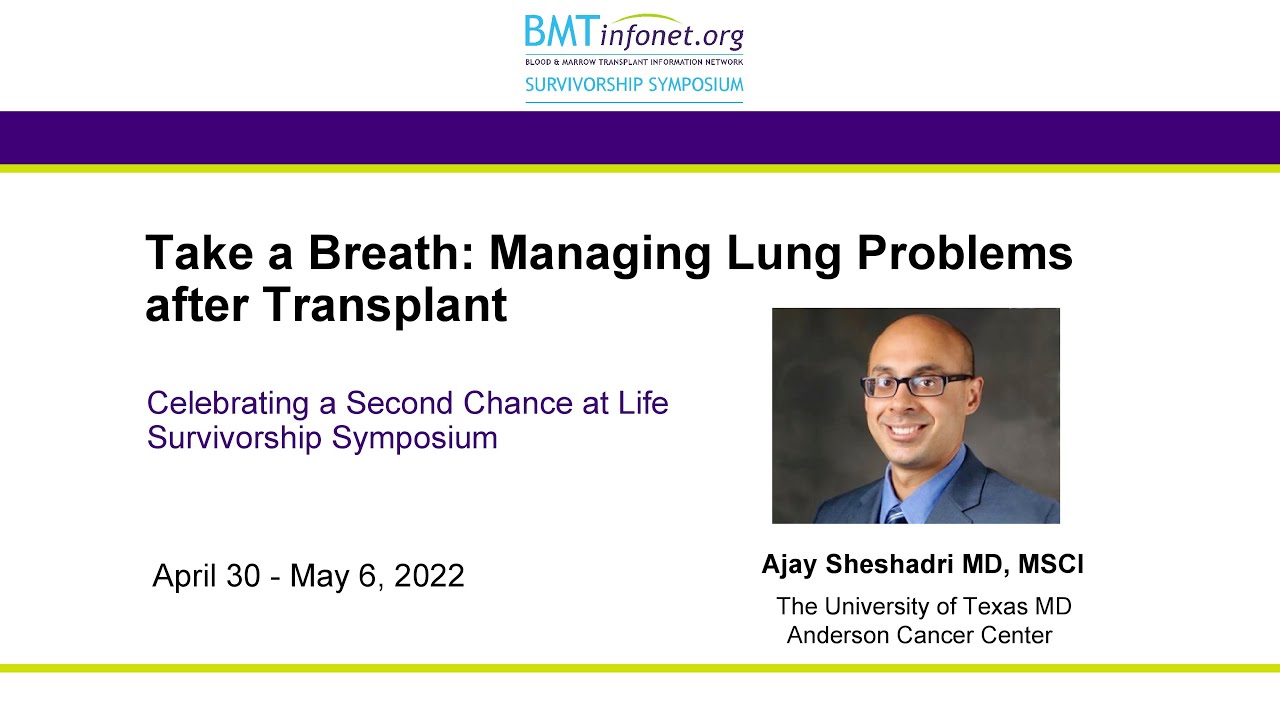How Chronic GVHD affects the Lungs
Graft-versus-host disease sometimes targets the lungs. Periodic pulmonary function tests can help catch the problem before it becomes severe.
Symptoms
Chronic GVHD sometimes affects the airway passages in the lungs. It often occurs after a viral infection. Also called bronchiolitis obliterans syndrome (BOS), lung GVHD may cause:
- dry cough
- a cough that persists after a cold for longer than 2-4 weeks
- wheezing
- shortness of breath, even with light activities
- feeling like you can’t take a deep breath
Patients with pulmonary GVHD often do not have symptoms until the disease has progressed. Periodic pulmonary function tests are the best way to catch lung GVHD so that treatment can begin promptly to control the disease.
Treatment
If you develop pulmonary GVHD, you doctor may treat you with:
- steroid inhalers
- bronchodilators
- tacrolimus
- extracorporeal photopheresis
- montelukast
- azithromycin
Take Action!
- Talk to your doctor about scheduling periodic pulmonary function tests to monitor for lung GVHD, particularly during the first two years after transplant.
- If you are having breathing difficulties, let your doctor know immediately. The sooner treatment begins, the better the outcome.
- Avoid smoking tobacco products, e-cigarettes and marijuana, as these can make the symptoms worse.
- Protect against lung infections. Be sure your vaccinations are up to date, and that you get your yearly flu shot and the COVID vaccine, unless your transplant doctor recommends otherwise.
Watch a this video about lung GVHD
Click here to read the transcript of this video and download the slides.
#GVHD
If you use social media, learn more about living with graft-versus-host disease and advances in treatment at #GVHD. Connect with others and show your support for GVHD patients.



